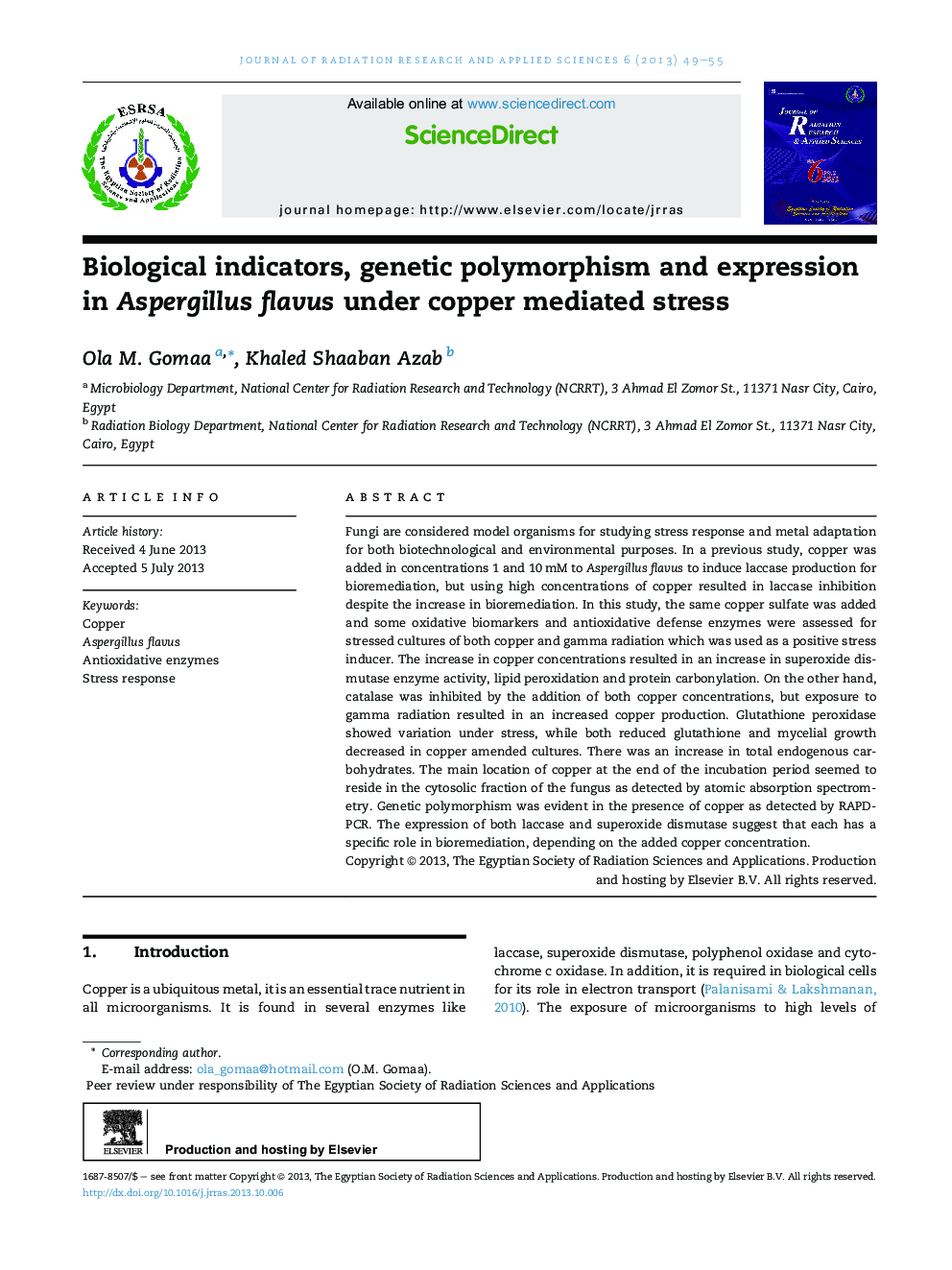| Article ID | Journal | Published Year | Pages | File Type |
|---|---|---|---|---|
| 1570363 | Journal of Radiation Research and Applied Sciences | 2013 | 7 Pages |
Fungi are considered model organisms for studying stress response and metal adaptation for both biotechnological and environmental purposes. In a previous study, copper was added in concentrations 1 and 10 mM to Aspergillus flavus to induce laccase production for bioremediation, but using high concentrations of copper resulted in laccase inhibition despite the increase in bioremediation. In this study, the same copper sulfate was added and some oxidative biomarkers and antioxidative defense enzymes were assessed for stressed cultures of both copper and gamma radiation which was used as a positive stress inducer. The increase in copper concentrations resulted in an increase in superoxide dismutase enzyme activity, lipid peroxidation and protein carbonylation. On the other hand, catalase was inhibited by the addition of both copper concentrations, but exposure to gamma radiation resulted in an increased copper production. Glutathione peroxidase showed variation under stress, while both reduced glutathione and mycelial growth decreased in copper amended cultures. There was an increase in total endogenous carbohydrates. The main location of copper at the end of the incubation period seemed to reside in the cytosolic fraction of the fungus as detected by atomic absorption spectrometry. Genetic polymorphism was evident in the presence of copper as detected by RAPD-PCR. The expression of both laccase and superoxide dismutase suggest that each has a specific role in bioremediation, depending on the added copper concentration.
